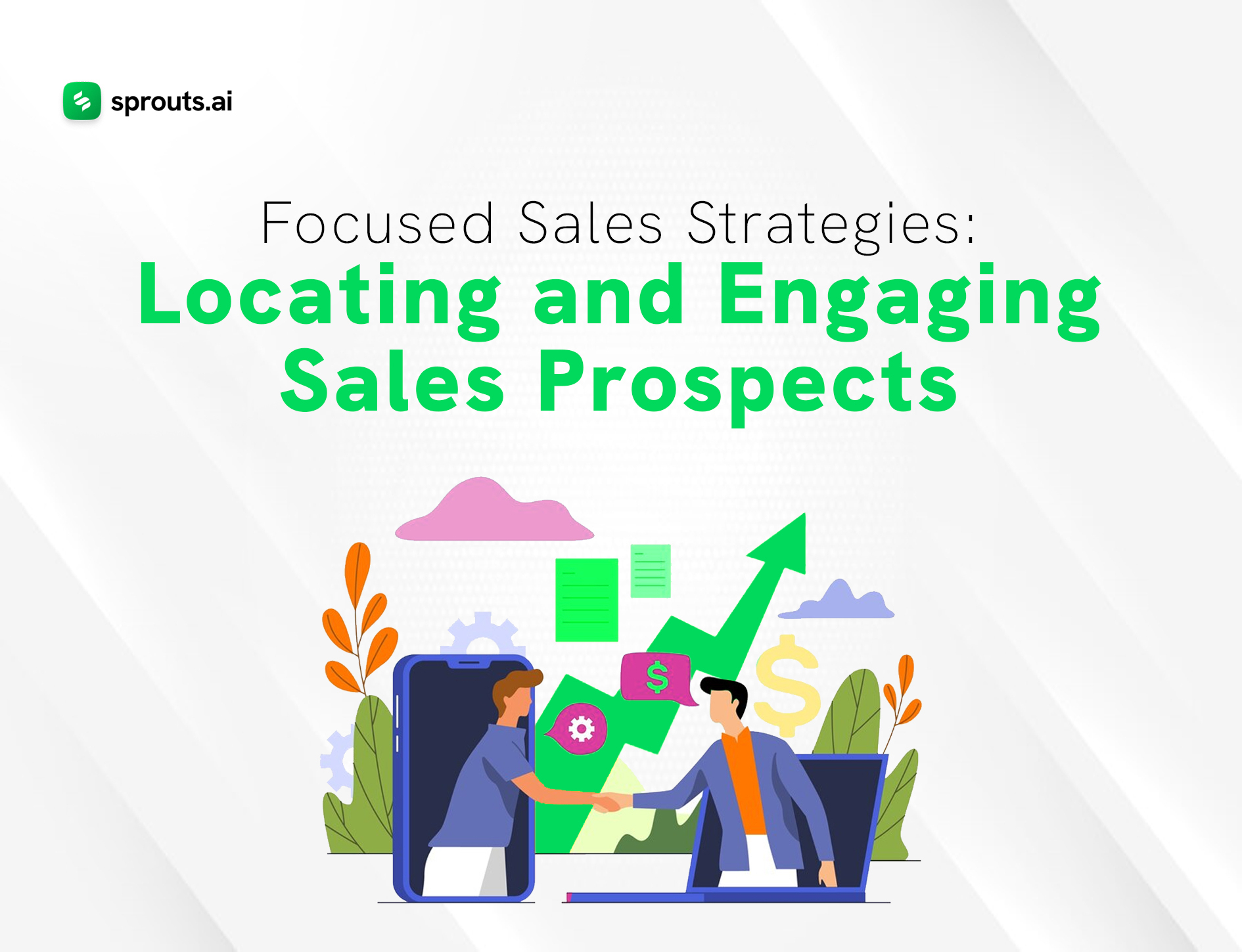The days of the pushy salesperson and generic pitches are long gone. Today’s consumers are bombarded with choices, and their purchasing decisions are deliberate. So, how do you stand out from the crowd and connect with potential customers who genuinely need what you offer?
The answer lies in focused sales strategies. This blog will help you with the tools and techniques to locate your ideal prospects and forge meaningful, long-lasting relationships. From harnessing the power of data to crafting personalized communication, we’ll explore proven methods to transform fleeting interactions into loyal customers.
Be ready to ditch the outdated sales tactics and step into a world of targeted engagement, value-driven conversations, and ultimately, a thriving sales pipeline.
Understanding the Ecosystem:
Before going deep into specific strategies, it’s crucial to have a clear understanding of the sales ecosystem. In today’s hyperconnected world, consumers are inundated with information and choices. As a result, they have become more discerning and selective in their purchasing decisions. This shift necessitates a more targeted and personalized approach to sales.
Locating Sales Prospects:
The first step in any successful sales strategy is identifying potential prospects. This process involves leveraging various tools and techniques to pinpoint individuals or organizations that are likely to be interested in your product or service. Here are some effective methods for locating sales prospects:
- Utilize Data Analytics: Data is a goldmine when it comes to identifying prospects. By analyzing demographic information, purchasing behavior, and online activity, you can create detailed customer profiles and identify segments that are most likely to convert.
- Social Media Listening: Social media platforms offer invaluable insights into consumer preferences and interests. By monitoring conversations, hashtags, and mentions related to your industry or product, you can identify potential leads and engage with them in real time.
- Networking Events and Conferences: Attending industry-specific events and conferences provides an excellent opportunity to network with potential prospects face-to-face. Make sure to exchange contact information and follow up with personalized messages after the event.
- Referrals and Recommendations: Existing customers can be a valuable source of new business. Encourage satisfied customers to refer their friends and colleagues to your product or service, and offer incentives for successful referrals.
Engaging Sales Prospects:
Once you’ve identified potential prospects, the next step is to engage with them in a meaningful way. Effective engagement involves building rapport, providing value, and addressing the prospect’s needs and pain points. Here are some strategies for engaging sales prospects:
- Personalized Communication: Generic sales pitches are unlikely to resonate with today’s savvy consumers. Instead, take the time to personalize your communication based on the prospect’s interests, preferences, and challenges. Reference specific details from previous interactions to demonstrate that you’ve done your homework.
- Offer Value-Added Content: Content marketing is a powerful tool for engaging prospects and positioning yourself as a trusted advisor. Create informative and relevant content, such as blog posts, whitepapers, and case studies, that addresses the prospect’s pain points and provides actionable insights.
- Demonstrate Expertise: Position yourself as an authority in your field by sharing your knowledge and expertise with prospects. Offer advice, recommendations, and solutions to their problems, demonstrating that you understand their challenges and can help them overcome them.
- Utilize Multiple Channels: Don’t rely on a single channel to engage with prospects. Instead, leverage a multi-channel approach that includes email, social media, phone calls, and in-person meetings. Tailor your messaging and communication style to each channel to maximize effectiveness.
- Follow-Up Persistently: The sales process often requires multiple touchpoints before a prospect converts. Don’t be afraid to follow up with prospects persistently, but always be respectful of their time and preferences. Use a CRM system to track interactions and schedule follow-up reminders.
Measuring Success:
Finally, it’s essential to track and measure the success of your sales efforts to identify areas for improvement and optimization. Key performance indicators (KPIs) such as conversion rate, lead quality, and customer lifetime value can provide valuable insights into the effectiveness of your sales strategies. Use these metrics to refine your approach and tailor your tactics to better meet the needs of your target audience.
By effectively locating and engaging with sales prospects, you can build meaningful relationships, drive conversions, and ultimately, grow your business. By leveraging data, personalization, and value-added content, you can position yourself as a trusted advisor and guide prospects through the sales funnel with confidence and expertise. Incorporate these strategies, adapt them to your unique circumstances, and watch as your sales efforts yield impressive results.

